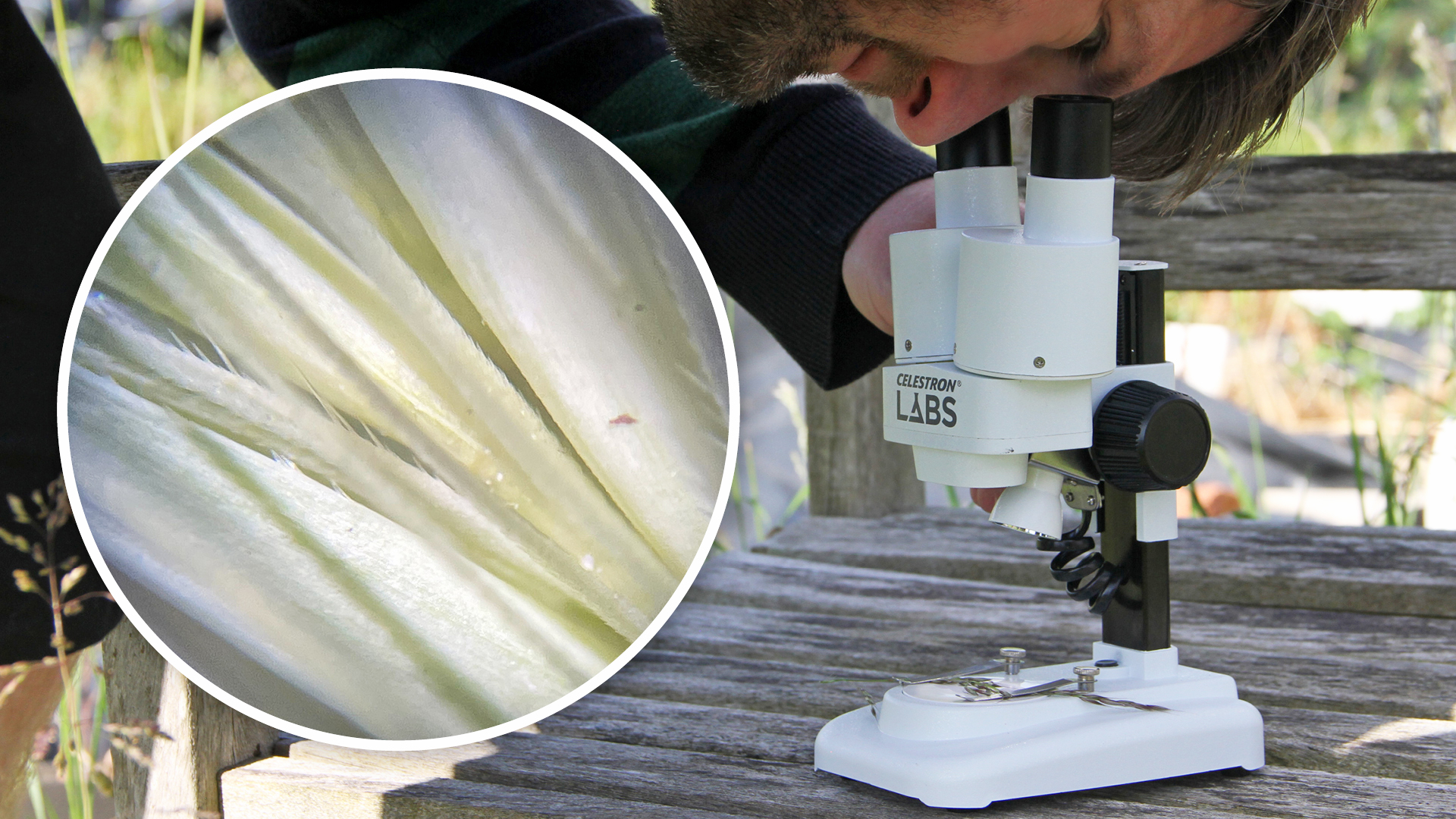
The world of microscopy can sometimes seem inaccessible to beginners, who aren't ready for slide preparation, staining and other technical setups. Stereo microscopes (also known as dissecting microscopes) solve this by lowering the magnification and increasing the working distance, meaning you can drop any small object onto the stage and instantly see close up details.
Celestron has a long-founded association with optics, having started in the 1950s as Valor Electronics, specialising in telescopes. The Celestron Labs S20 is their budget stereo microscope, ideal for observing everyday objects like coins, insects, rocks, leaves and fossils, blurring the line between macrophotography and microscopy.
Celestron S20 specifications
Price
Coming in under a hundred pounds, the Celestron Labs S20 microscope can be seen as a budget microscope. It isn't available on the Celestron website, but you can find it for around $60 / £70. At this price you get a lot of fun for your buck, while you don't have to worry about a child breaking a valuable piece of equipment.
Building and handling
The Celestron Labs S20 has a durable metal body, with a slight dappled effect, which is pleasing to the touch. Other elements, like the focus knob, are made of a more tactile plastic. As a whole, this microscope is lightweight and on the smaller side, making it easier to carry around and great for kids to store in their backpacks. There is no carrying case, protective cover or caps for the eyepiece tubes, so you may have to be creative to keep it safe and clean. The base is small and doesn’t have any grip, so it isn’t a particularly stable platform.
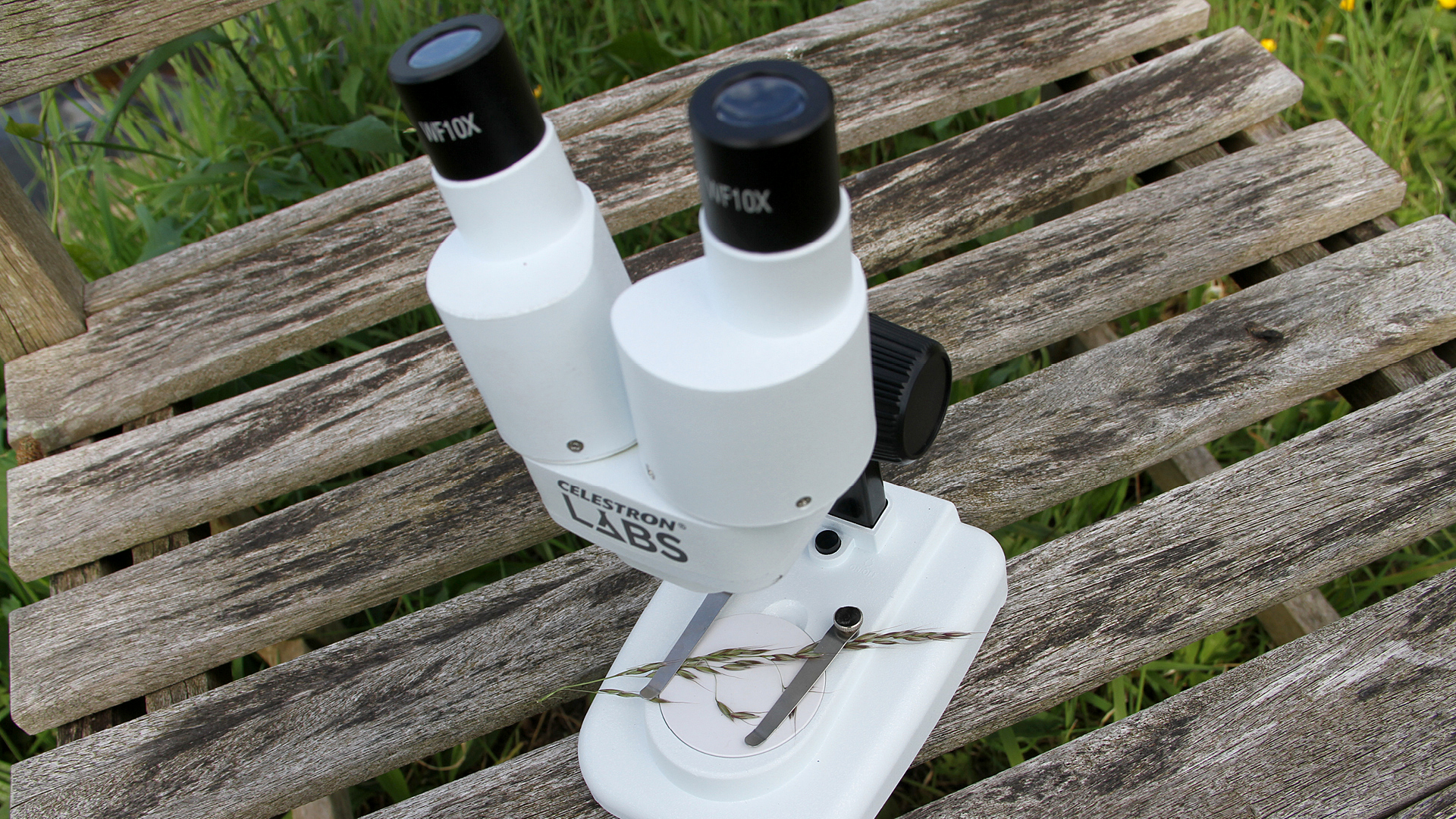
Two objective lenses are built into the head and the kit comes with two 10X eyepieces, combining to provide the listed 20X magnification. The eyepieces can be removed from the tubes, but do not click back into place, so can easily fall out. The eyepieces can be broken down for cleaning, but I would only recommend doing this if you know what you’re doing as you can easily end up damaging or losing elements.
The two lens systems are inclined around 15 degrees of each other, retaining stereoscopic vision and rendering the image in three dimensions. The dual eyepieces stand upright, which does not make for the most comfortable viewing position, but they can be adjusted to suit various interpupillary distances.
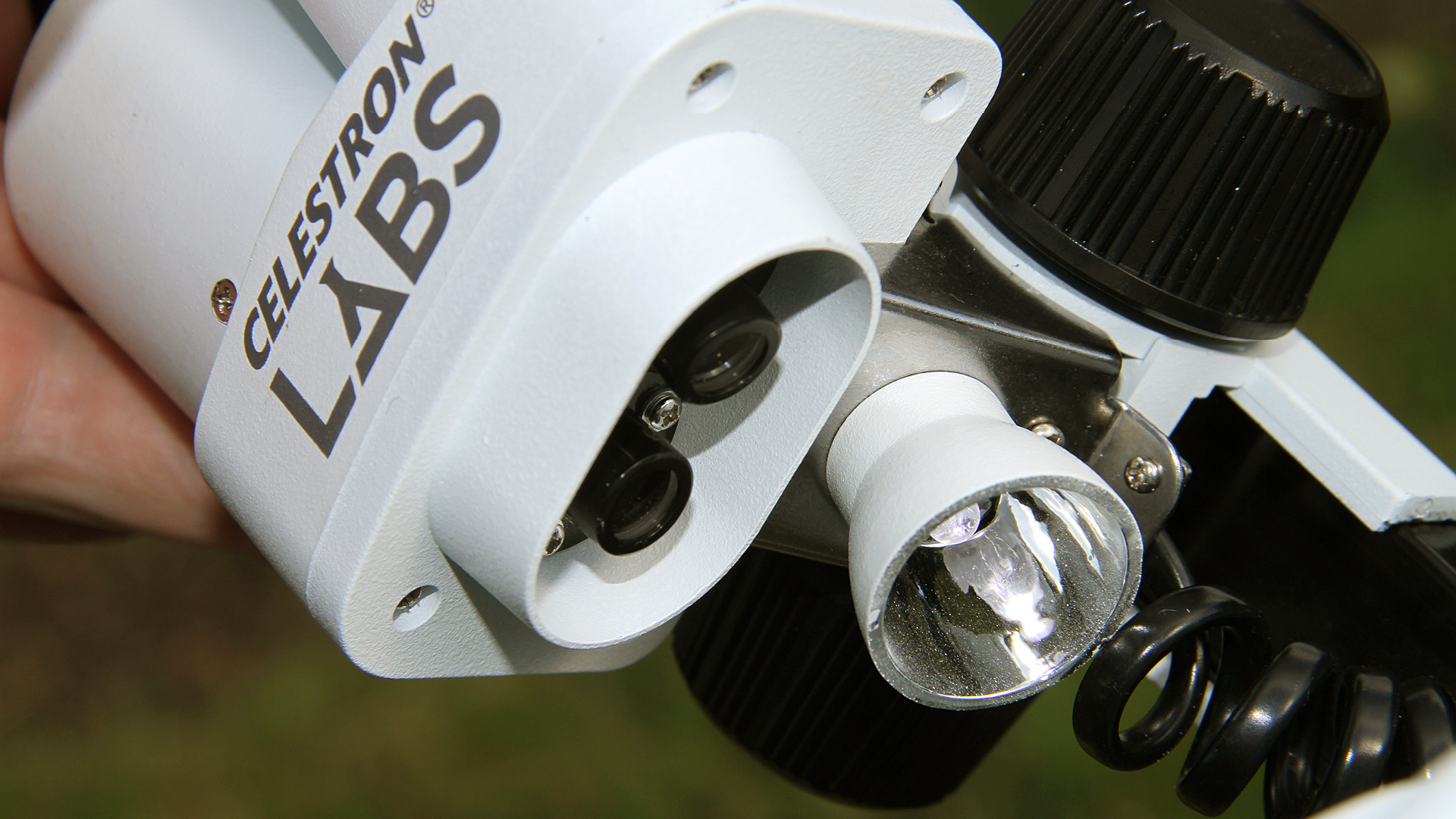
As a stereo microscope, this model has a lower magnification than might be found on compound microscopes, but has a maximum working distance of just over 10cm, so it’s perfect for large, bulky objects. Because of the low magnification, sizes can be estimated by using a ruler placed alongside a specimen.
The head is attached to a rack-and-pin spine, which cranks up and down to focus in and out. There is one coarse focusing knob attached to the head and at this lower magnification a finer control is not necessary.
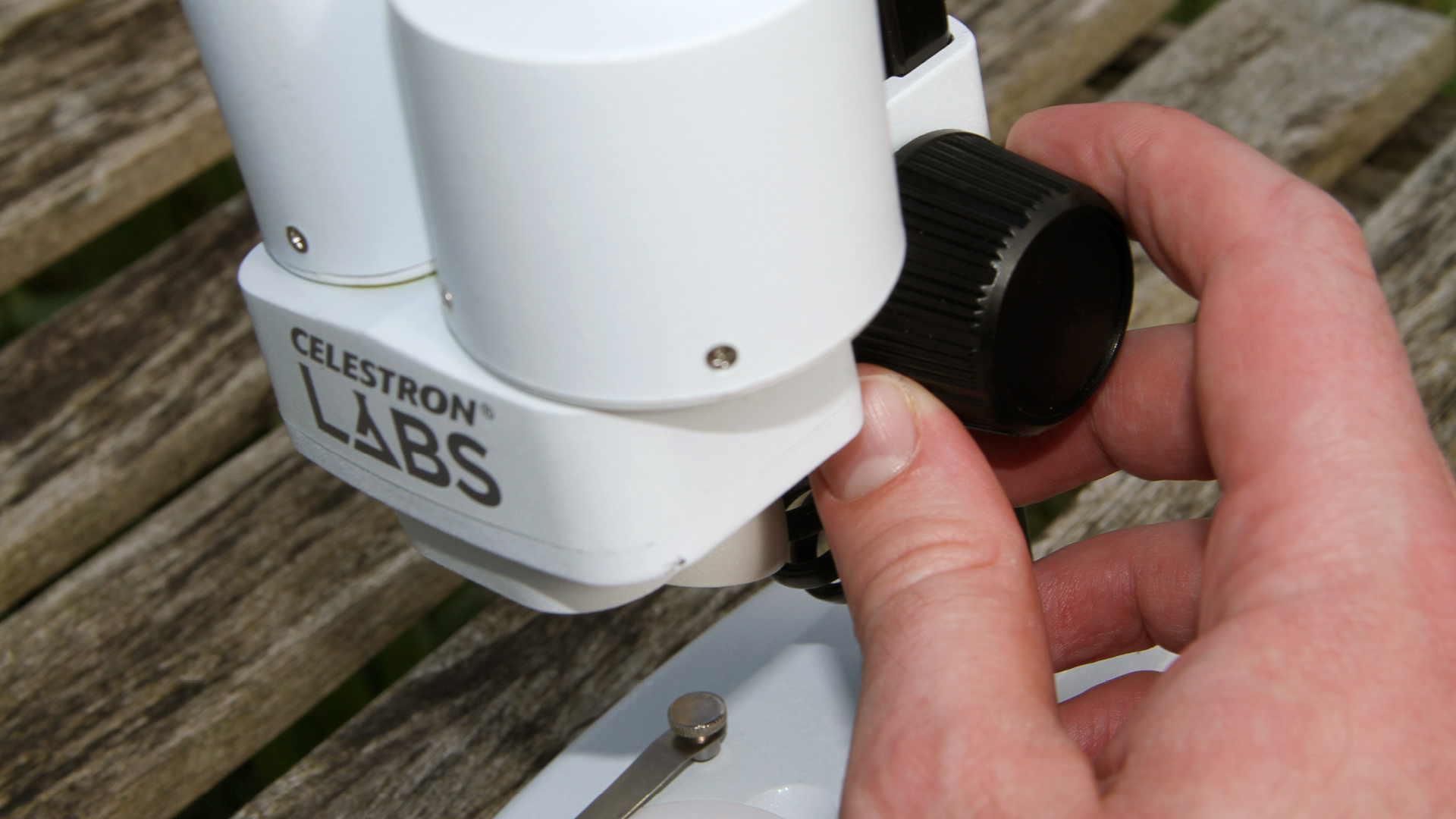
An LED light hangs just behind the two objective lenses, facing down towards the lower plate and producing a bright, cold light. It is battery powered, so you can use this microscope in the field, at school or sat on the sofa, wherever you like. I left the light on for many hours and it didn't get hot, while there was no impact on performance.
There is a button that turns the light on and off, but there is no control to adjust the power. It’s a shame the light source is fixed in place, as a removable light source can sometimes reveal more details when used at a different angle.
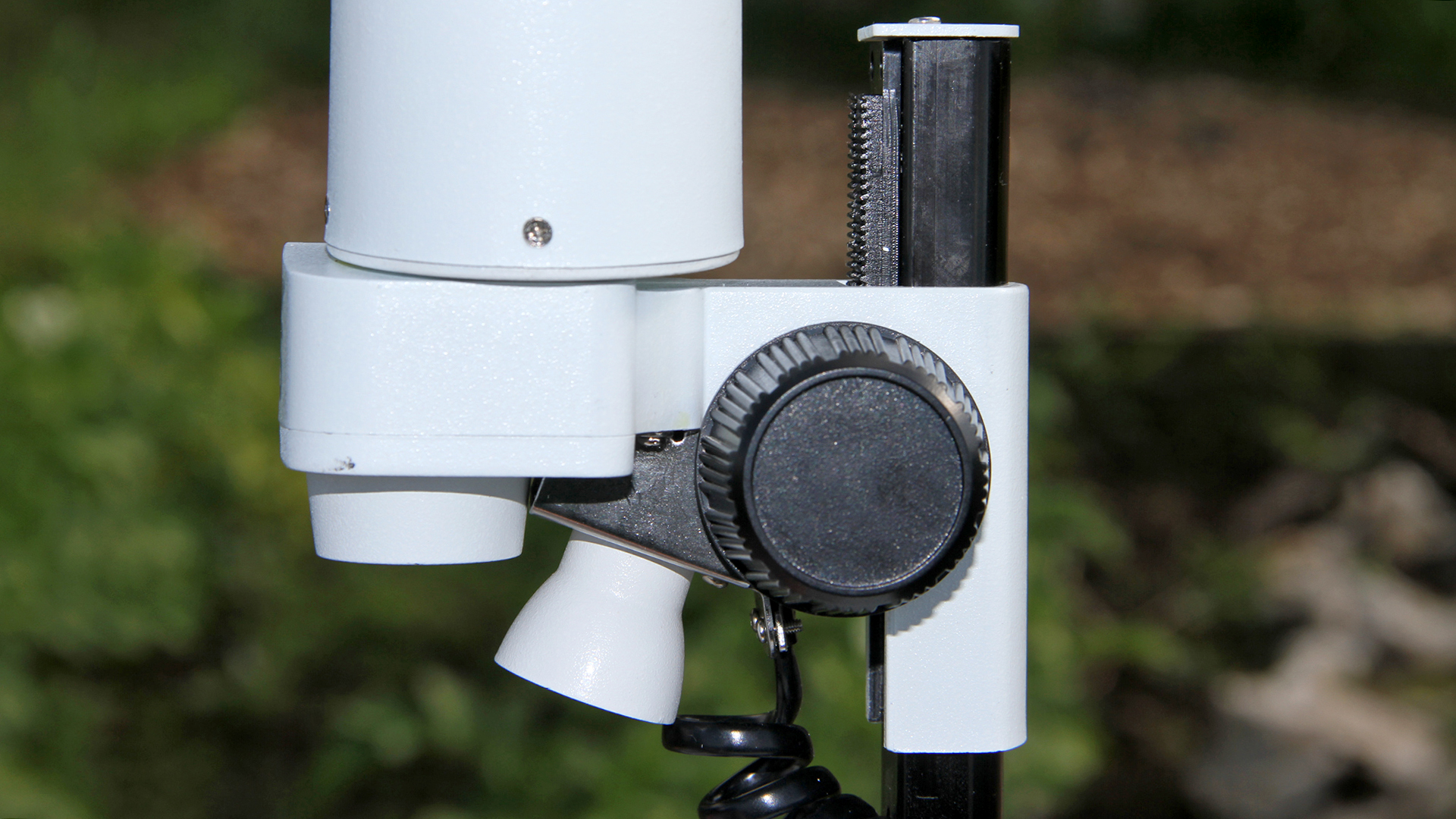
Two clips on the base can be used to hold specimens in place, which work well enough, but can also be removed to keep the space clear. The lower plate is removable, revealing a small well beneath that allows you to use additional lighting (if you have a light that fits).
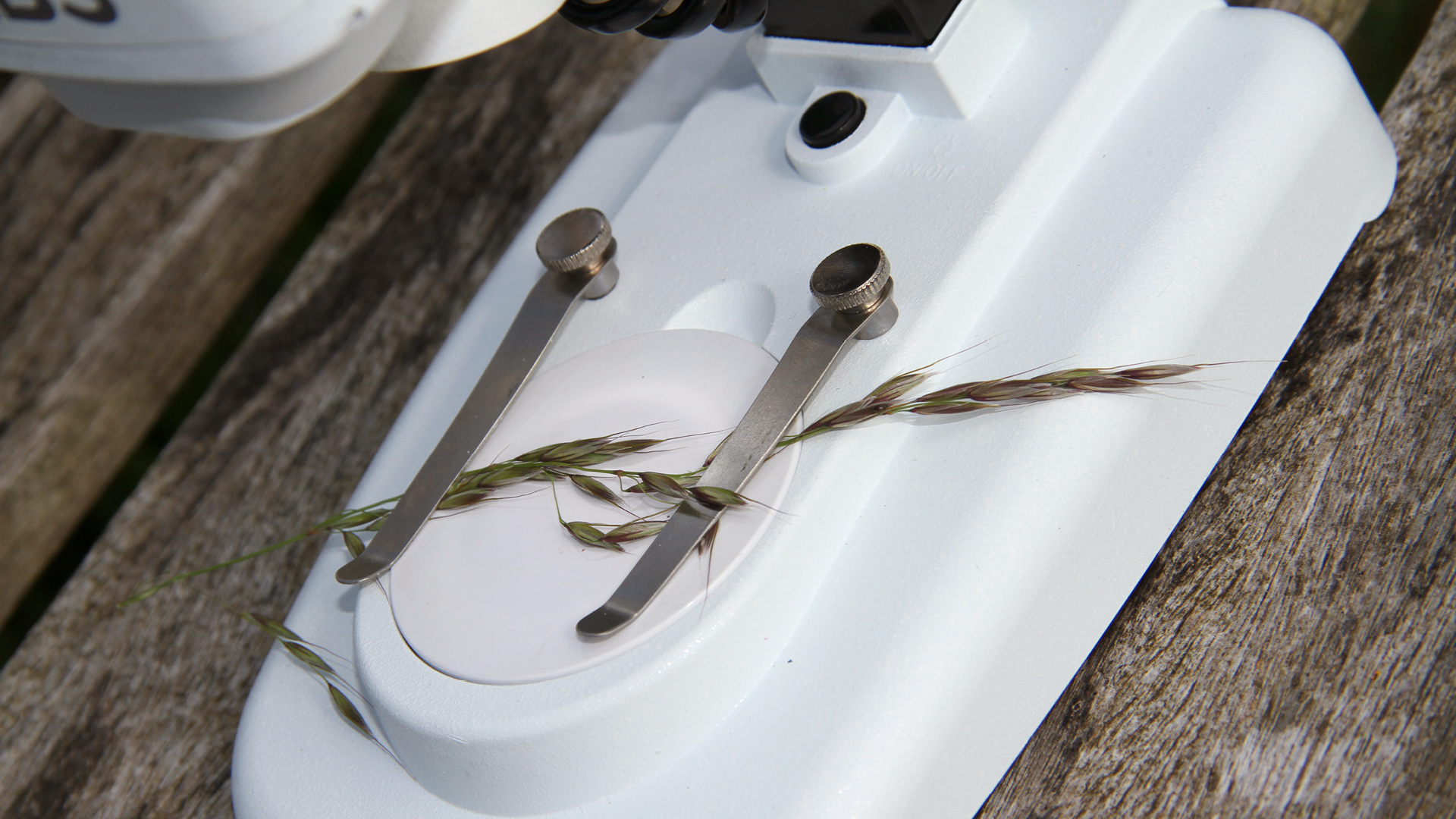
The two insect specimens, provided with the kit, really show off the advantages of this microscope – the Cupreous Chafer glitters with an indescribable iridescence and the hornet's compound eyes are enhanced by the 3D view. It would be nice if there were more examples provided, but you should have no difficulty in finding other objects to try out under the lens.
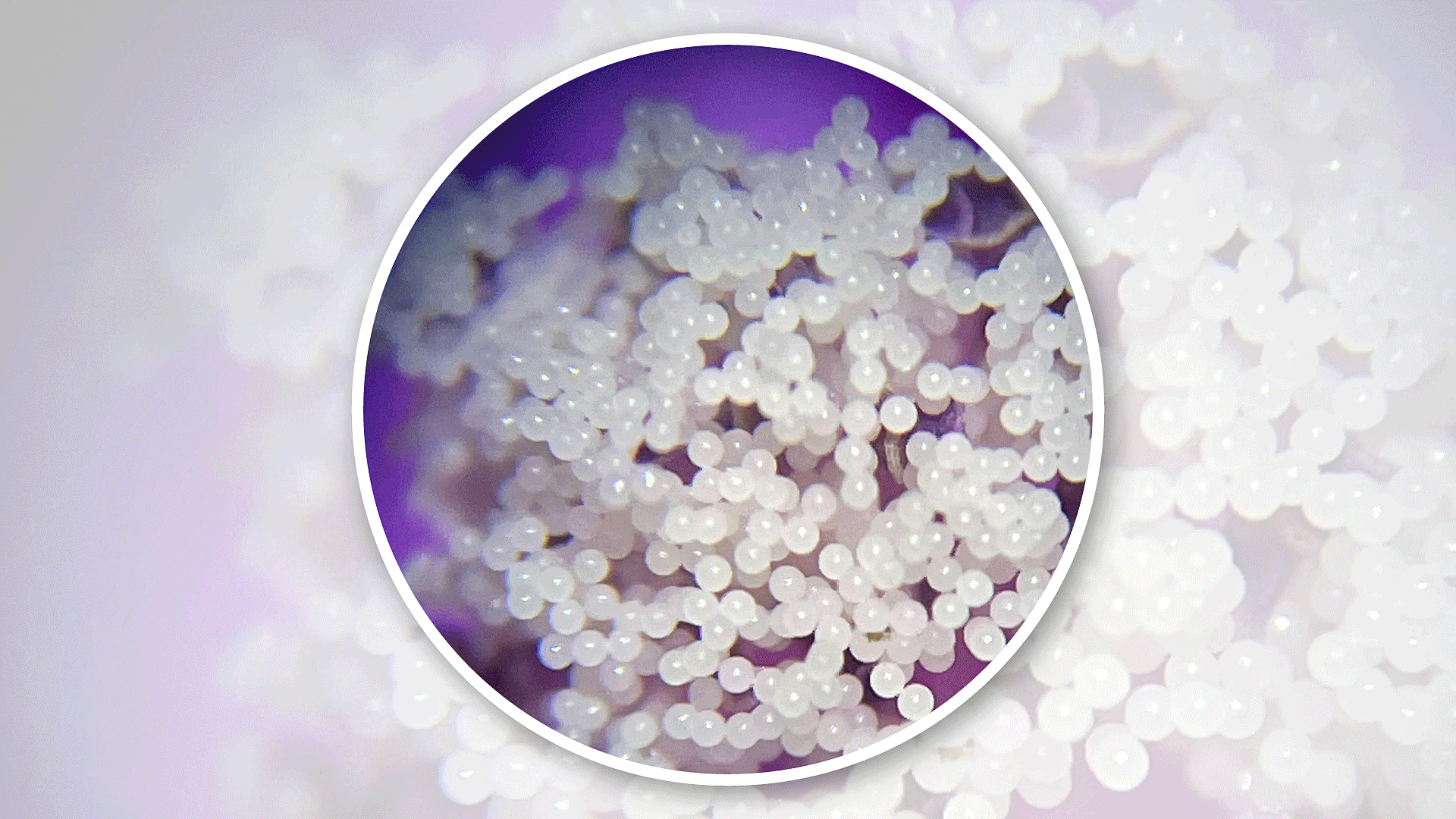
Performance
This microscope doesn’t come with instructions, which highlights how easy it is to get started. Pop the batteries in (requires a small screwdriver to get inside) and adjust the eyepieces to suit your interpupillary distance – this will ensure you make the most of the 3D compound image – and you’re off. Neither of the eyepieces have a diopter adjustment control, so people with visual impairments might have issues.
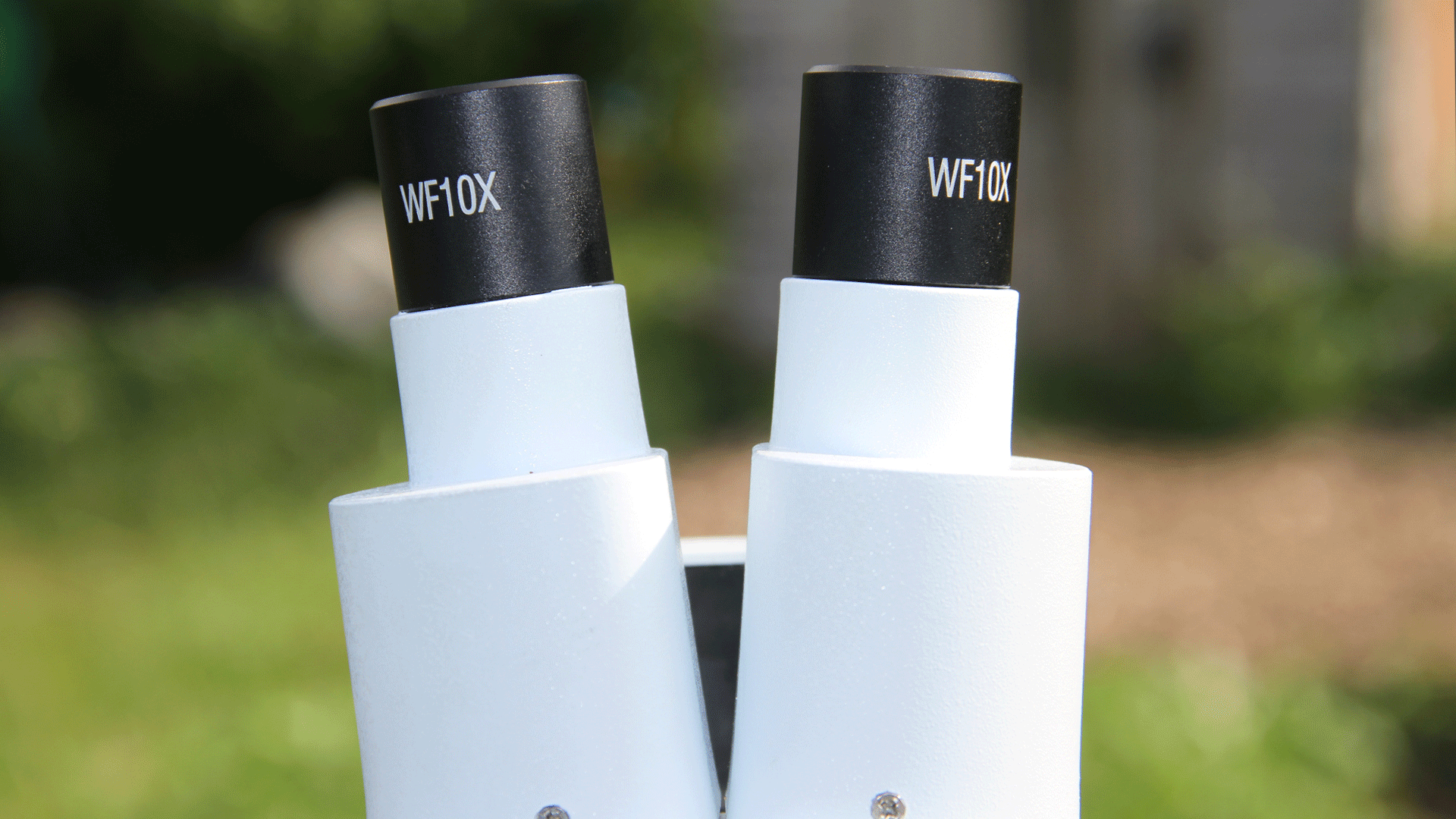
The first thing I tried with this microscope were the two insect specimens that came with the pack. Under natural light they were both flat and boring, but the moment you turn on the LED reflecting light source, they are transformed into something spectacular. The beauty of a dissecting microscope like this is that you don’t have to prepare slides, but can grab anything you see and look at it (although some things might try to wriggle away). I took it up to my allotment and tried it with flowers, leaves and grasses. It's amazing what's revealed in the most unassuming objects by even a low magnification.
The lenses are fairly good quality and the image is sharp across the whole view. There is no camera connected to this microscope, so while you can take pictures down the eyepiece with your phone, it's hard to share your discoveries.
The LED provides an intense white light, which can’t be adjusted, losing detail on some specimens. It can help if you add a dark piece of card behind the specimen to reduce the reflection.
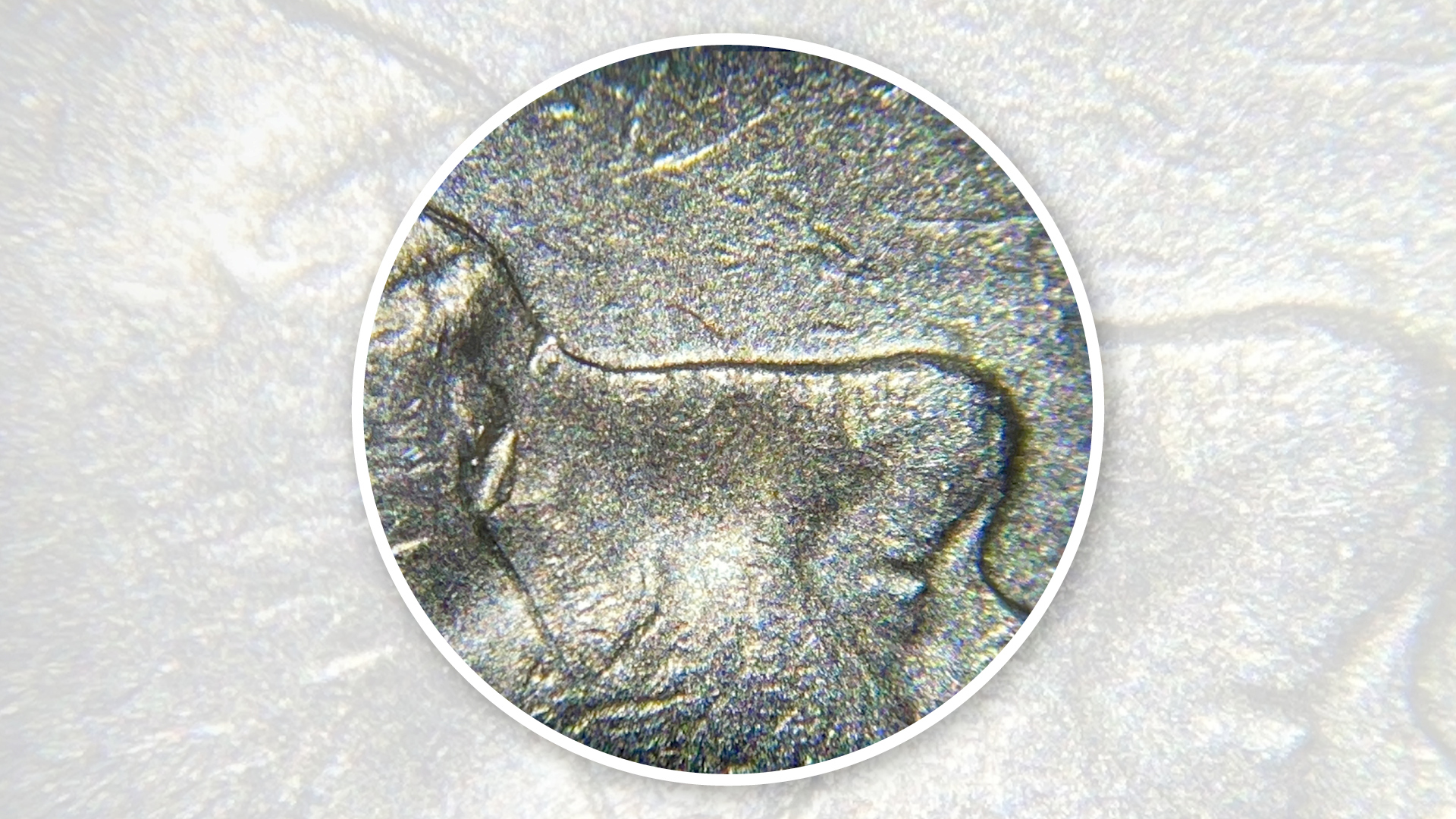
Verdict
There's a lot of fun to be had with this microscope. It's small and portable, making it perfect for taking outside and getting close to nature. You don't need any experience to get going and the results are impressive. The LED provides a constant, bright light that illuminates most specimens well, but you might have to add a darker background for some more reflective objects.
✅ Buy this if...
- You're excited to see everyday objects up close.
- You don't want a larger magnification than 20X.
🚫 Don't buy this if...
- You want to view microscope slides at higher magnifications.
- You're buying for a lab or university.







